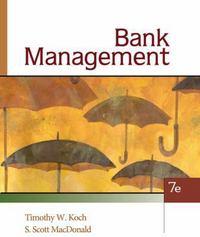
question 1 and 2 are confusing to follow
. Represent each of t d Prisoner's Dilemma in an automaton dia a. Choose C in period 1 and after any history in which the other player chose C in every period except, possibly, the previous period; choose D after any other history. (That is, punishment is grim1 but its initiation is delayed by one period.) b. Choose C in period 1 and after any history in which the other player chose D in at most one period; choose D after any other history. (That is, punishment is grim, but a single lapse is forgiven.) c. (Pavlov, or wr'rHray, Iosaeshi) Choose C in period 1 and after any history in which the outcome in the last period is either (CC) or (D,D)', choose D after any other history. (That is, choose the same action again if the outcome was relatively good for you, and switch actions if it was not.) d. For each of these three strategies 5, determine the Values of 6, if any, for which the strategy pair (s, s) is a Nash equilibrium of the infinitely repeated version of ne following game: to exit full screen c D c 2,2 0,3 D 3,0 1,1 For each strategy s for which there is no such value of 5, determine whether there are any other payoffs for the Prisoner's Dilemma such that for some ii the strategy pair (.3, s) is aNash equilibrium of the infinitely repeated version of this modied Version of the game. 2. Consider the following general version of the Prisoner's Dilemma: C D c x,:c Qy D y. 0 1,1 a. Find the condition on the discount factor 5 under which the strategy pair in which each player uses the grim trigger strategy is a Nash equilibrium of the infinitely repeated version of this game. b. Find conditions on It: I, y, and the discount factor 5 under which the strategy pair in Which each player uses a kperiod punishment strategy is a Nash equilibrium of the infinitely repeated version of this game. c. Find conditions on x, y, and the discount factor 8 under which the strategy pair in which each player uses a mfon strategy is a Nash equilibrium of the infinitely repeated version of this game. Show, in particular, that if y 2 h, then the strategy pair is not a Nash equilibrium for any value of E








